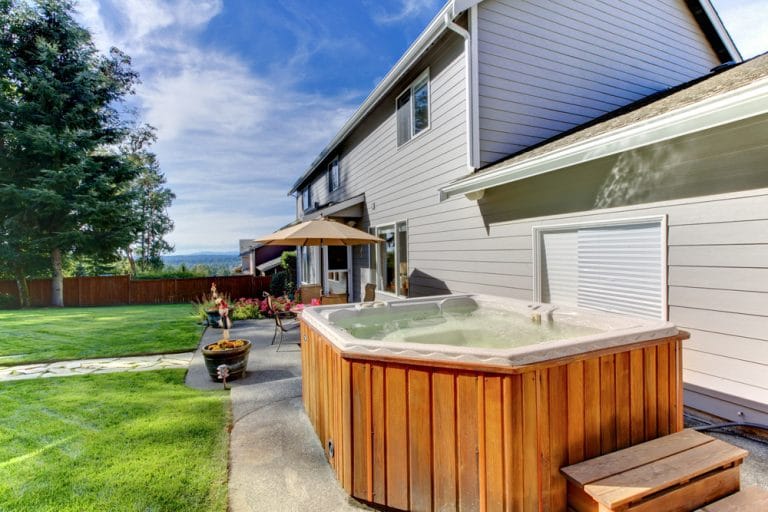The concentrations of calcium and magnesium in hot tubs must be monitored to ensure proper chemical balance and clean water. If there is too much calcium, or the water is too “hard,” your tub may get “scaling” or buildup on the sides or in the filter. If there is not enough, the water is “soft” and becomes corrosive to the tub materials and cause damage. Assessing the amount of calcium is an important part of proper hot tub maintenance and one factor in the water Saturation Index, which includes hardness, alkalinity, pH, and water temperature.
Water Hardness
One important component of this delicate chemical balance is calcium hardness, which is the same thing as water hardness. This is a measure of the concentration of calcium in your hot tub water and is measured in parts per million (ppm). The ideal amount is dependent on your tub’s finish, but is generally between 150-450 ppm.
Effects of High Calcium
In the high temperatures of the spa water, the calcium binds to another molecule called carbonate to form calcium carbonate. The heat of the water decreases its ability to dissolve calcium carbonate, and rapid water evaporation leads to the formation of deposits on the surfaces of the tub known as “scaling.”
This scale can cause multiple problems, including blocking the filter, building up in the pipes and increasing pressure, and coating the heater which lessens its efficiency. If not corrected, these parts will cease to work properly and you may need to seek out a professional for hot tub repairs. Scaling also provides a home to bacteria, specifically Pseudomonas and Legionella, which can cause flu-like symptoms, rashes, and swimmer’s ear.
Effects of Low Calcium
Low levels can be just as damaging to your tub as high levels. When there are low amounts of calcium, the water is acidic (the pH is lower) compared to when it contains the proper amount, so it will take in minerals from its surroundings to become more basic. The materials that make up your hot tub, like plaster, grout, and cement, all contain calcium that the water will absorb when it comes into contact with those surfaces. This breaks down those materials and damages your hot tub.
Testing and Adjusting Hardness
It is recommended to test the calcium hardness of your hot tub at least once a week. The easiest way to do this is by using test strips. However, some of these only measure “total hardness,” the amount of both magnesium and calcium in the water. You are still able to use this measurement to adjust calcium levels based on overall mineral content, but it will not be exact.
An option that can provide more accurate measurements is a liquid or titration test. This type of test uses chemical reagents and buffers (and a little bit of math) to determine the concentration of calcium in the water within 10 ppm of the true value.
If the calcium hardness is too low, there are many products on the market that can be added directly to the water to increase calcium concentration.
If the hardness is too high, you can drain some or all of the water and replace it with softer water if the pH and alkalinity in the spa are balanced. If pH and alkalinity are high as well, you can add an acidic element to lower all three.
There are also water softener systems that you can install to filter out calcium in your house and hot tub’s water supply. For advice about the right system for you, you can contact your local hot tub service company.

